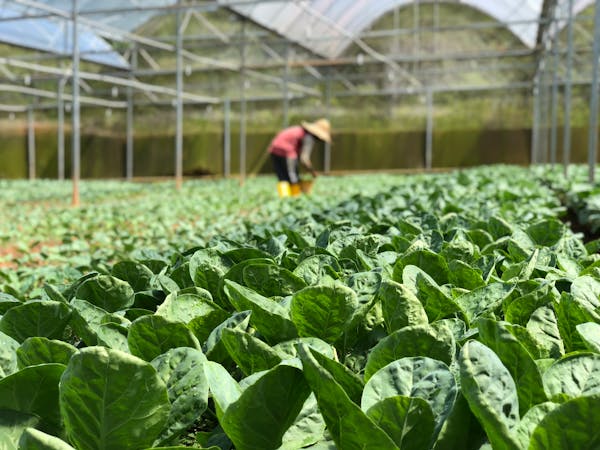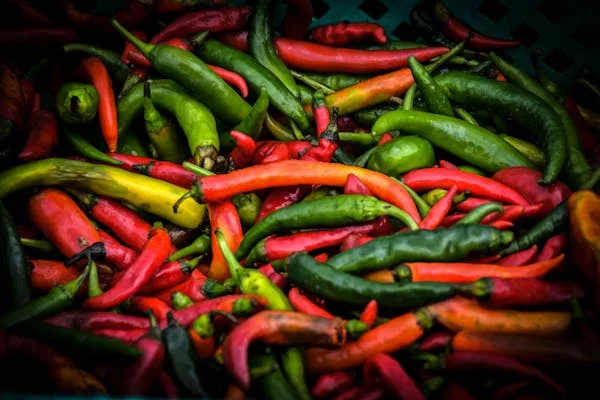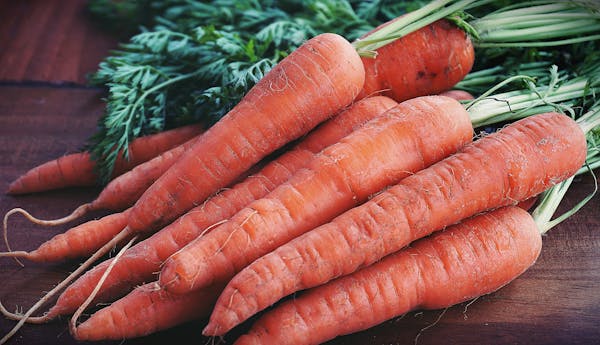

Growing food crops can be rewarding but also challenging. Many gardeners and farmers seek ways to increase their yields without extra costs or excessive effort. Using quality seeds, nourishing the soil, and selecting disease-resistant varieties are key strategies that significantly enhance crop yield.
Planning and understanding the local environment also play crucial roles in maximizing the productivity of food crops. To boost efficiency, garden layout and crop rotation can create a sustainable growing system. By applying these practices, anyone can create a thriving garden or farm.
Readers will find effective tips and techniques in this article that can help elevate their crop yields. With the right approach, it is possible to transform a modest harvest into a bountiful one, ensuring that food production meets their needs.
Understanding Crop Requirements
Maximizing crop yield starts with understanding the specific requirements of each crop. Key factors include soil quality, climate conditions, and the choice of crop varieties. It is also advisable to be closer to extension officers for their guidance.
Soil Quality and Composition
The farm where the farmer cultivates his crops is just one thing. The most important critical thing is about the type of soil that the farm has. Soil is the foundation for healthy crops. It must have the right balance of nutrients, pH, and structure.
Key elements to consider include:
- Nutrients: Essential nutrients like nitrogen, phosphorus, and potassium promote growth. Regular soil testing helps determine nutrient levels.
- pH Level: Most crops thrive in slightly acidic to neutral soil (pH 6.0-7.0). Adjusting soil pH can optimize nutrient availability.
- Texture: Soil texture affects water retention and drainage. Sandy soils drain quickly, while clay soils retain moisture. A mix usually provides the best conditions.
- Adding organic matter, like compost, can enhance soil fertility, structure, and moisture retention.
Climate and Weather Patterns

In the recent era there have been lots of changes when it comes to climate and its predictability. Climate significantly impacts crop growth. Farmers must pay attention to local weather conditions and long-term climate trends.
Critical aspects include:
- Temperature: Different crops have specific temperature needs. For example, corn prefers warmer temperatures, while spinach thrives in cooler weather.
- Rainfall: Crops need adequate moisture. Understanding average rainfall patterns helps in planning irrigation and selecting drought-resistant varieties.
- Frost Dates: Knowing the first and last frost dates helps farmers schedule planting and harvesting, reducing the risk of crop loss.
- Adjusting planting times or using row covers can protect crops from unexpected weather changes.
Crop Varieties and Genetics

Good crop production starts with the type of crops that the farmer intends to cultivate in their farm. Choosing the right crop varieties is essential for maximizing yield. Some varieties are better suited to specific climates and soil types.
Considerations include:
- Adaptation: Select varieties that are known to perform well in local conditions. Local extension services often provide recommendations.
- Disease Resistance: Disease-resistant varieties can lead to higher yields by reducing crop loss. This is especially important in regions prone to specific diseases.
- Yield Potential: Hybrid varieties often have higher yield potential compared to traditional varieties, but they may require more resources.
- Evaluating these factors helps farmers make informed decisions, leading to better yields and sustainable farming practices.
Cultivation Techniques
Effective cultivation techniques are essential for maximizing food crop yields. This section discusses important methods in seed selection, water management, and weed and pest control to enhance overall crop production.
Seed Selection and Planting Methods
Choosing the right seeds is crucial. High-quality seeds are disease-resistant and suited to local soil and climate conditions. Farmers should research and select varieties that have proven yields in their region. Planting methods also play a vital role. Techniques such as no-till farming minimize soil disturbance and conserve moisture. Meanwhile, row planting ensures uniform spacing, allowing crops to receive optimal sunlight and nutrients.
Farmers can also benefit from using cover crops between growing seasons. These crops improve soil health, reduce erosion, and enhance nutrient availability for the main crop. The cover crops protect the main crop from direct sunlight too.
Water Management
Water management directly affects crop health and yield. Efficient irrigation systems, like drip irrigation, supply water directly to the plant roots, reducing waste and disease risk. This system is beneficial in areas with limited water resources.
Monitoring soil moisture using sensors helps farmers determine the ideal watering times. This prevents over or under-watering, promoting healthy growth. Farmers may also consider rainwater harvesting. Collecting rainwater can reduce reliance on traditional water sources and provide additional irrigation options during dry spells.
Weed and Pest Control
Effective weed and pest control is essential for protecting food crops. Weeds compete for nutrients, water, and light, which can significantly reduce yields. Farmers should implement mulching to suppress weed growth. This also improves soil moisture retention.
Integrated Pest Management (IPM) frameworks combine biological control methods, such as introducing natural predators, with targeted pesticide use. This balanced approach minimizes chemical exposure and encourages a healthier ecosystem.
Regular monitoring of food crops helps in early pest detection. Timely intervention can prevent major infestations, ensuring better crop yields and overall plant health. Reading of farmers journals or consulting extension officers is useful for better yields.
Nutrient Management

Nutrient management is crucial for achieving high crop yields. Effective strategies help provide plants with the nutrients they need. This section will address specific fertilization methods and the benefits of incorporating compost and organic matter into the soil.
Fertilization Strategies
Farmers seeking for better yields can use fertilizers, however, they need right competency. Applying fertilizers in a thoughtful manner ensures crops receive adequate nutrients. The key is to use the right type of fertilizer at the right time.
- Soil Testing: Regular soil tests help identify nutrient deficiencies. This allows for tailored fertilization plans.
- Balanced Fertilizers: Using a combination of nitrogen, phosphorus, and potassium (N-P-K) supports healthy plant growth. Each nutrient plays a unique role:
- Nitrogen: Promotes leafy growth.
- Phosphorus: Enhances root development.
- Potassium: Improves overall plant health.
- Application Methods: Fertilizers can be applied through broadcasting, banding, or foliar feeding. Each method has its advantages based on crop type and growth stage.
Close attention is necessary for better observation and progress of the crops in the field. Consistent monitoring will help adjust the fertilization plan as needed throughout the growing season. This leads to improved yields and healthier food crops.
Composting and Organic Matter
When given the opportunity, the soil is capable of healing itself and restoring its natural nutrients. Incorporating compost and organic matter into the soil has numerous benefits for crops. This practice enriches soil health and provides essential nutrients over time.
- Nutrient Supply: Compost adds micro and macronutrients while improving soil structure.
- Microbial Activity: Healthy compost encourages beneficial microbes, which help plants absorb nutrients.
To maximize results:
- Apply Compost: Spread a layer of compost before planting or during soil preparation. This gives crops a nutrient boost.
- Rotate Crop Types: Different crops benefit from varying nutrients found in compost.
- Investing time in composting can lead to sustainable farming practices. It supports both current and future crop success.
Harvesting and Post-Harvest Handling
Farmers lose lots of produce from the farm due to lack of proper harvesting knowledge. Effective harvesting and post-harvest handling play a crucial role in maximizing yield from food crops. Proper techniques and timely actions can significantly enhance the freshness and quality of harvested produce.
Proper Timing and Techniques
Harvesting food crops at the right time is essential for optimal quality. Timing varies based on crop type, but generally, vegetables should be picked when they are at their peak ripeness. Signs of ripeness can include color change, size, and firmness.
Techniques for Harvesting:
- Use clean, sharp tools to avoid damaging plants.
- For soft fruits, gently twist or cut them to prevent bruising.
- Avoid harvesting during wet conditions, as this can promote disease spread.
Employing the correct method ensures that fruits and vegetables maintain their quality and reduces post-harvest losses. It is important to handle the produce gently to minimize damage during harvesting. Keeping the techniques properly ensures profit from the farm.
Storage and Preservation of food crops
Crops need care and proper handling even after harvesting them. Once harvested, proper storage is vital to maintain freshness. Most vegetables benefit from being kept cool and dry. Chilling them post-harvest can lower respiration rates, keeping them fresher for longer.
Storage Tips:
- Store leafy greens in perforated plastic bags to maintain humidity.
- Root vegetables should be kept in a cool, dark place.
- Regularly check stored produce for spoilage to prevent it from affecting others.
Using these storage methods allows for longer preservation and maintains nutritional quality, providing fresh produce for a more extended period. When all the guidelines are well observed, they ensure a farmer with good produce or good money if the crops are sold to the market.









Leave a Reply